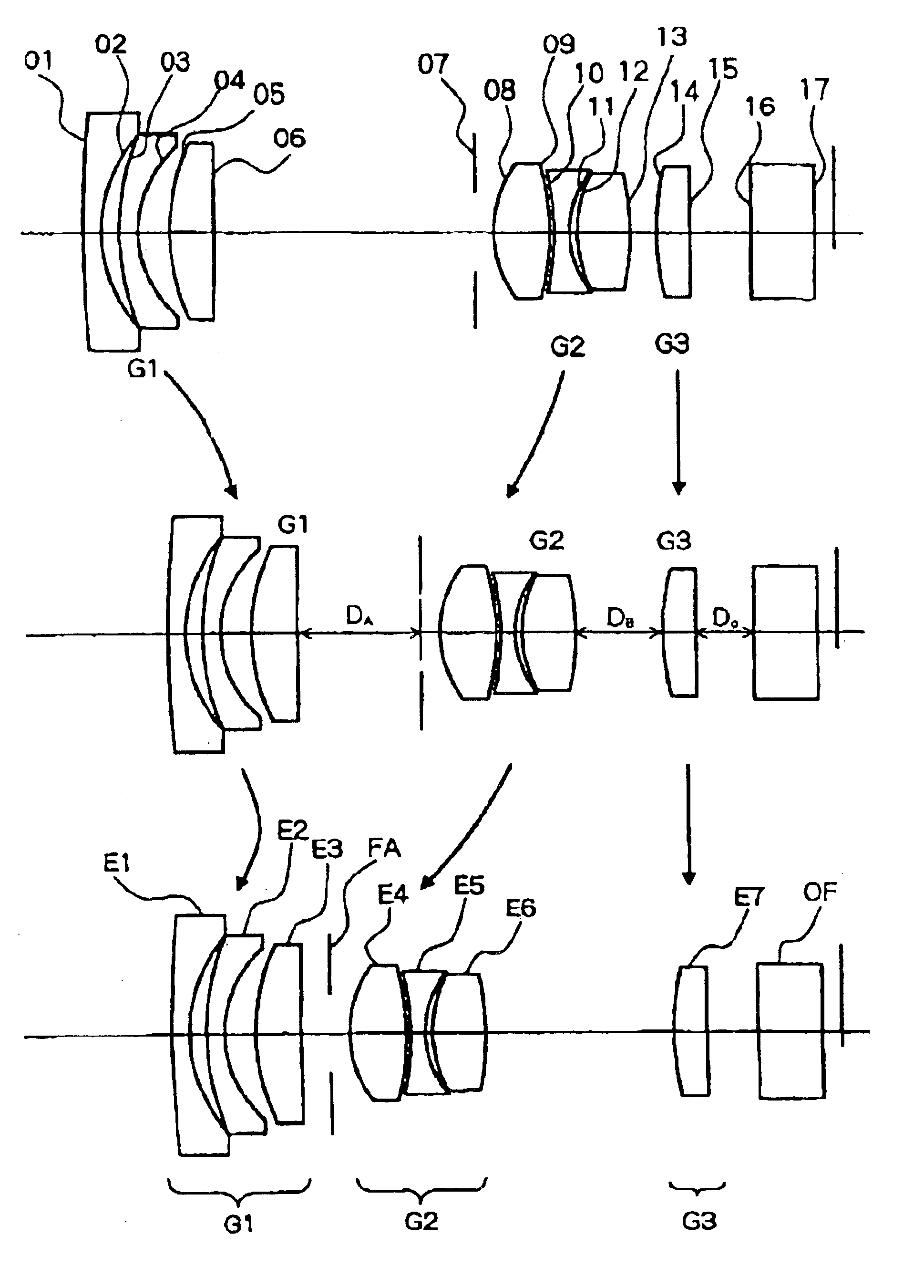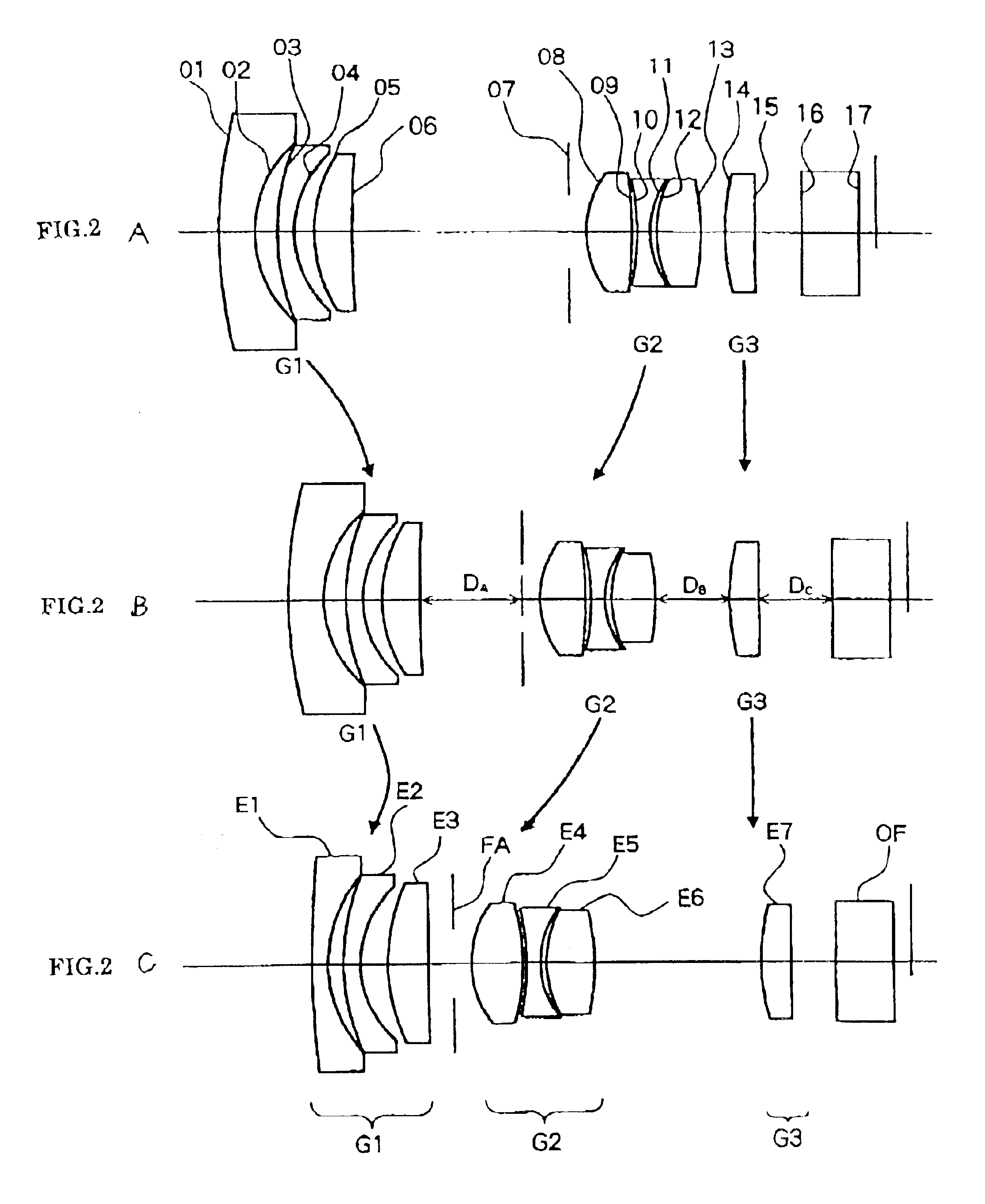Zoom lens, camera, and portable information terminal device
a technology of information terminal device and zoom lens, which is applied in the field of zoom lens, camera and portable information terminal device, can solve the problems of increasing noise, complicated exposure control during monitoring using display elements, and gradual darkening of monitor images, and achieves the effect of significantly increasing the degree of freedom in correction of aberration
- Summary
- Abstract
- Description
- Claims
- Application Information
AI Technical Summary
Benefits of technology
Problems solved by technology
Method used
Image
Examples
first embodiment
(First Embodiment)
FIGS. 1A to 1C show a configuration of an optical system of the zoom lens according to the first embodiment of the present invention. In order to grasp a zooming operation, FIG. 1A is a sectional view schematically showing a state of a short focal length end which is a wide angle end; FIG. 1B is a sectional view schematically showing a state of a middle focal length; and FIG. 1C is a sectional view taken along an optical axis schematically showing a state of a long focal length end which is a telephoto end, respectively.
A zoom lens shown in FIG. 1 comprises a first lens E1, a second lens E2, a third lens E3, a fourth lens E4, a fifth lens E5, a sixth lens E6, a seventh lens E7, a aperture stop lens E3, and an optical filter OF. In this case, the first lens E1 to third lens E3 configure a first group optical system G1; the fourth lens E4 to sixth lens E6 configure a second group optical system E2; and the seventh lens E7 configures a third group optical system G3. E...
second embodiment
(Second Embodiment)
FIGS. 2A to 2C show a construction of an optical system of the zoom lens according to the second embodiment of the present invention. In order to grasp a zooming operation, FIG. 2A is a sectional view taken along an optical axis, for schematically showing a short focal length end which is a wide angle end; FIG. 2B is a sectional view schematically showing a state of a middle focal length; and FIG. 2C is a sectional view taken along an optical axis, for schematically showing a state of a long focal length end which is a telephoto end, respectively.
A zoom lens shown in FIG. 2 comprises a first lens E1, a second lens E2, a third lens E3, a fourth lens E4, a fifth lens E5, a sixth lens E6, a seventh lens E7, a aperture stop FA, and an optical filter OF. In this case, the first lens E1 to third lens E3 configure a first group optical system G1; the fourth lens E4 to sixth lens E6 configure a second group optical system G2; and the seventh lens E7 configures a third gro...
third embodiment
(Third Embodiment)
A zoom lens shown in FIG. 3 comprises a first lens E1, a second lens E2, a third lens E3, a fourth lens E4, a fifth lens E5, a sixth lens E6, a seventh lens E7, an eighth lens E8, a aperture stop FA, and an optical filter OF. In this case, the first lens E1 to third lens E3 configure a first group optical system G1; the fourth lens E4 to seventh lens E7 configure a second group optical system G2; and the eighth lens E8 configures a third group optical system G3. In the Figure, optical surfaces are designated by numbers of their corresponding face. As described above, reference numerals in FIG. 3 are used independently of another embodiment.
In FIG. 3 as well, for example, the first lens E1, second lens E2, third lend E3, aperture stop FA, fourth lens E4, fifth lens E5, sixth lens E6, seventh lens E7, eighth lens E8 and optical filter OF are sequentially arranged in this order from an object side of an object or the like, and an image is formed at the rear of the opt...
PUM
 Login to View More
Login to View More Abstract
Description
Claims
Application Information
 Login to View More
Login to View More - R&D
- Intellectual Property
- Life Sciences
- Materials
- Tech Scout
- Unparalleled Data Quality
- Higher Quality Content
- 60% Fewer Hallucinations
Browse by: Latest US Patents, China's latest patents, Technical Efficacy Thesaurus, Application Domain, Technology Topic, Popular Technical Reports.
© 2025 PatSnap. All rights reserved.Legal|Privacy policy|Modern Slavery Act Transparency Statement|Sitemap|About US| Contact US: help@patsnap.com



